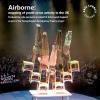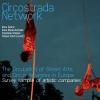Data and Statistics
Produced by the researcher Leila Jancovich on behalf of Arts Council England as part of the Young People’s Participatory Theatre project, the bulk of this document is the presentation of statistical data from a series of questionnaires and consultations targeting the UK youth circus sector. The report gives an idea of the geographic spread and demographic range of youth circus, the organisational structure of providers and their level of activity, and the funding and impact of the sector, among other things. The report makes a series of recommendations for actions to develop the sector.
Published by the Czech contemporary circus centre Cirqueon, this document is an introduction to the various aspects of the CZ scene, covering a brief overview of the artform, government policy and levels of subvention, and operational models within the sector, as well as giving details on some key companies, festivals and organisations.
An early piece of research from Arts Council England on the circus and street arts sectors, this document presents the results of an extensive survey that gathered information on: organisational status and staffing; size and source of income; network and organisation membership; performance activity and audiences; methods of promotion; education and outreach activity; and relationship with the funding system. Respondents were also invited to make suggestions for improvement.
A statistical measure of the health of circus and street arts companies in Europe, gathering quantitative and qualitative information on funding, staffing, dissemination, etcetera. A follow-up study was published in 2011 to measure the impact of the global financial crisis.
Following on from a previous study conducted in 2006 that took a statistical measure of the health of 66 circus and street arts companies (annual income, number of employees, level of subsidy, etcetera), The Circulation of Street Arts and Circus Artworks in Europe – 2011 collects the same quantitative data from some of the same companies (21 had either closed down or didn't reply) to get an idea of how their situations have changed in light of the global economic crisis. The years compared are 2006 and 2010.




